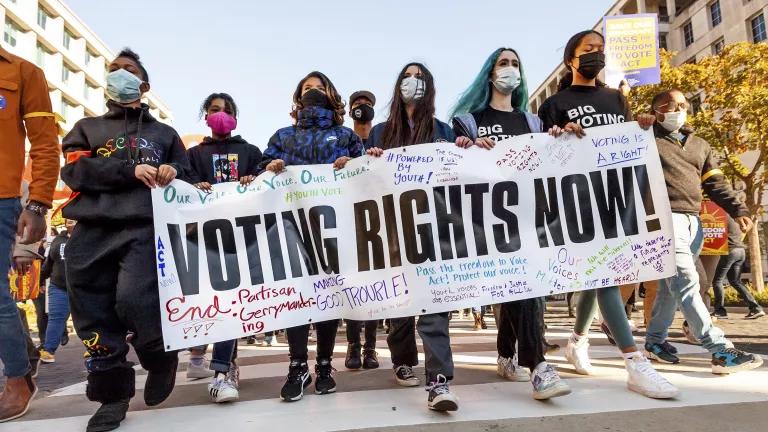Trump Tells Agencies to Slash Environmental and Health Protections

The executive order is an opportunistic attempt to push a deregulatory agenda during a public health crisis.
Citing the economic fallout from the COVID-19 pandemic, President Trump issued a sweeping executive order that directs federal agencies, like the U.S. Environmental Protection Agency, to roll back or fail to enforce a wide range of regulations that could include environmental and health protections.
“When you hear the Trump administration say it wants to eliminate ‘red tape,’ think protections Congress ordered agencies to put in place to protect you and me from the coronavirus, air pollution, and a whole host of other harms that can make us sick and even kill us,” says Gina McCarthy, president of NRDC.
The unprecedented move lets agencies “waive, suspend, and eliminate” a wide swath of safeguards that impact businesses, including environmental, labor, workplace safety, and health policies. Early in his presidency, Trump issued a similar executive order, which required federal agencies to repeal two regulations for every new one issued.
“As far as the EPA is concerned, finding more ‘red tape’ will be like getting blood from a stone—during the pandemic alone, the EPA has moved to increase our exposure to mercury, soot, toxic chemicals and perchlorate,” McCarthy says, referring in part to the EPA’s recent non-enforcement policy that allows polluters to stop monitoring and reporting their emissions data, which NRDC and partners are fighting in court. “What’s left to cut?”
Both moves come on the heels of new research that shows long-term exposure to air pollution—which causes disease and weakens the respiratory system’s ability to fight infections—is associated with significantly higher death rates from COVID-19 in the United States.
The administration claims this latest executive order will help the country recover economically from the pandemic, but according to a 2017 report from its own U.S. Office of Management and Budget, regulations actually yield economic benefits.
The report concluded that for every dollar spent complying with major safeguards, the public reaped between $2 and $12 in annual benefits, such as lives saved and improved health and safety. And while EPA protections in particular are costly, the report notes, they also yield some of the highest benefits—up to $705.7 billion annually, far outweighing costs to industry.
“Hasn’t anyone in the White House noticed that our economy depends on keeping people healthy?” McCarthy says. “Why can’t they just start focusing on rebuilding our nation to make it stronger, healthier, and more prosperous and stop telling agencies to cut protections that keep us from getting sick?”
The executive order itself recognizes—as it must—that agencies can only roll back safeguards if their actions are “consistent with law.” NRDC—which has sued the administration 112 times since Trump took office and has won 90 percent of the cases resolved to date—will see them in court when they break the law.



